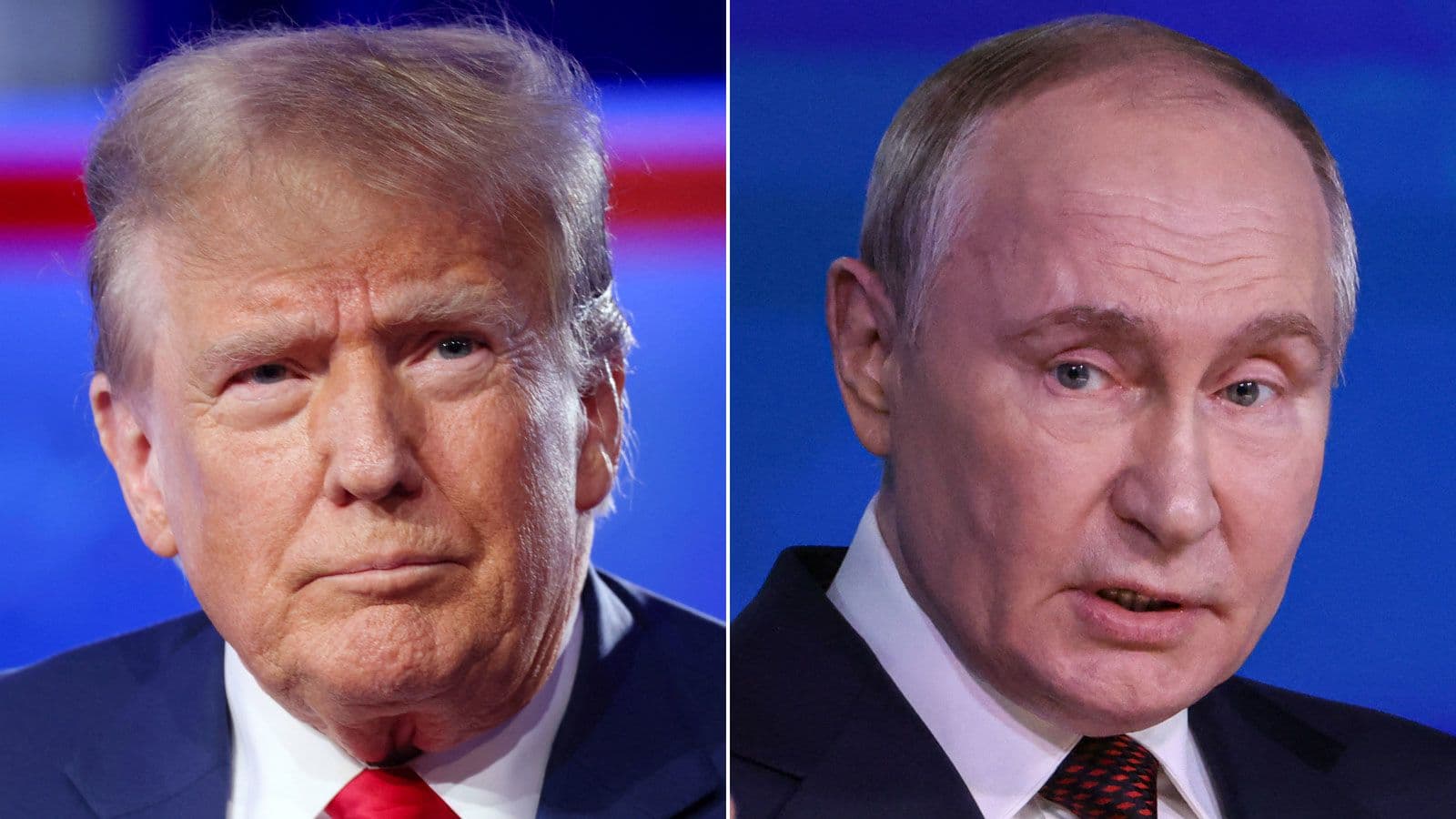Loading News Article...
We're loading the full news article for you. This includes the article content, images, author information, and related articles.
We're loading the full news article for you. This includes the article content, images, author information, and related articles.
United States President Donald Trump announced plans for a summit with Russian President Vladimir Putin in Budapest, Hungary, following a "very productive" phone call.

United States President Donald Trump has revealed intentions to hold a summit with Russian President Vladimir Putin in Budapest, Hungary, at an unspecified date, aiming to de-escalate the ongoing conflict in Ukraine. This announcement, made on Thursday, October 16, 2025, follows a phone conversation between the two leaders, which President Trump described as "very productive."
The planned meeting in Budapest will be the second between Trump and Putin, their previous encounter in Alaska in August having concluded without a diplomatic breakthrough. The diplomatic push coincides with Ukrainian President Volodymyr Zelenskyy's visit to the White House on Friday, October 17, 2025, where the potential supply of US-made Tomahawk cruise missiles to Ukraine is expected to be a central topic.
President Trump has recently hinted at the possibility of providing Ukraine with Tomahawk missiles, a move that would equip Kyiv with its longest-range weapon system to date, capable of striking targets deep within Russian territory. However, his tone after the call with Putin introduced uncertainty regarding the immediate delivery of such assistance, with Trump noting that Putin "didn't like it" when the possibility was raised. Trump also expressed concerns about depleting the US's own missile inventory, stating, "We need them too, so I don't know what we can do about that."
The Tomahawk Land Attack Missile (TLAM) is a long-range, all-weather, jet-powered, subsonic cruise missile. It is primarily launched from naval ships or submarines and has a range of up to approximately 2,400 km (about 1,500 miles). These missiles are designed to fly at low altitudes, making them difficult to detect by defense systems, and are known for their precision guidance.
The potential transfer of Tomahawk missiles to Ukraine represents a significant escalation in US military aid. Russia has previously warned that such a delivery would mark a "qualitatively new stage of escalation" and could severely strain US-Russian relations.
While the US Army has been developing a ground-based launch platform for the Tomahawk, this capability is reportedly not yet ready for deployment, even for US forces. Ukraine currently lacks a navy with ships capable of launching these 20-foot-long missiles, suggesting that any deployment would require alternative launch solutions.
Ukrainian officials have consistently advocated for long-range missile capabilities to counter the ongoing Russian invasion, which is now in its fourth year. They argue that enhanced offensive capabilities could compel Moscow to engage in more serious peace negotiations. Ukrainian Prime Minister Yulia Svyrydenko and other senior officials have met with representatives from major US defense companies, including Raytheon, the manufacturer of the Tomahawk missile, to discuss advanced defense systems.
Conversely, President Trump, fresh from brokering a peace deal in Gaza, has indicated a desire to leverage diplomatic momentum to pressure Moscow into ending the conflict. However, his past interactions with Putin have shown a tendency to soften his stance after direct engagement.
Key Missile Data:
The US Navy's inventory of Tomahawk missiles was estimated at around 4,000 in 2023 by The Heritage Foundation. However, this figure predates significant military actions, including strikes against Houthi rebels in Yemen, where 135 Tomahawk missiles were launched by the Eisenhower Carrier Strike group. Pentagon budget documents indicate a low rate of new missile procurement, with only 68 new missiles purchased in 2023 by the Navy and Marine Corps, and no new orders from the Navy in subsequent years.
The potential transfer of Tomahawks carries the risk of escalating the conflict, as warned by Moscow. Furthermore, defense officials have expressed skepticism about the practical employment of these missiles by Ukraine due to the lack of suitable launch platforms. Even if approved, the deployment and training process could take months, offering no immediate solution to Ukraine's battlefield challenges.
The exact number of Tomahawk missiles the US would be willing to provide remains uncertain, with some experts suggesting a limited transfer of 20 to 50 missiles. Such a quantity may not significantly alter the dynamics of combat operations. The specific date for the Trump-Putin summit in Budapest is also yet to be determined.
Observers will be closely watching the outcomes of President Zelenskyy's meeting with President Trump for any definitive statements on the Tomahawk missile transfer. The details and timing of the proposed Trump-Putin summit in Budapest will also be crucial in understanding the future trajectory of diplomatic efforts to end the Ukraine war.
Keep the conversation in one place—threads here stay linked to the story and in the forums.
Other hot threads
E-sports and Gaming Community in Kenya
Active 6 months ago
Popular Recreational Activities Across Counties
Active 6 months ago
The Role of Technology in Modern Agriculture (AgriTech)
Active 6 months ago
Investing in Youth Sports Development Programs
Active 6 months ago